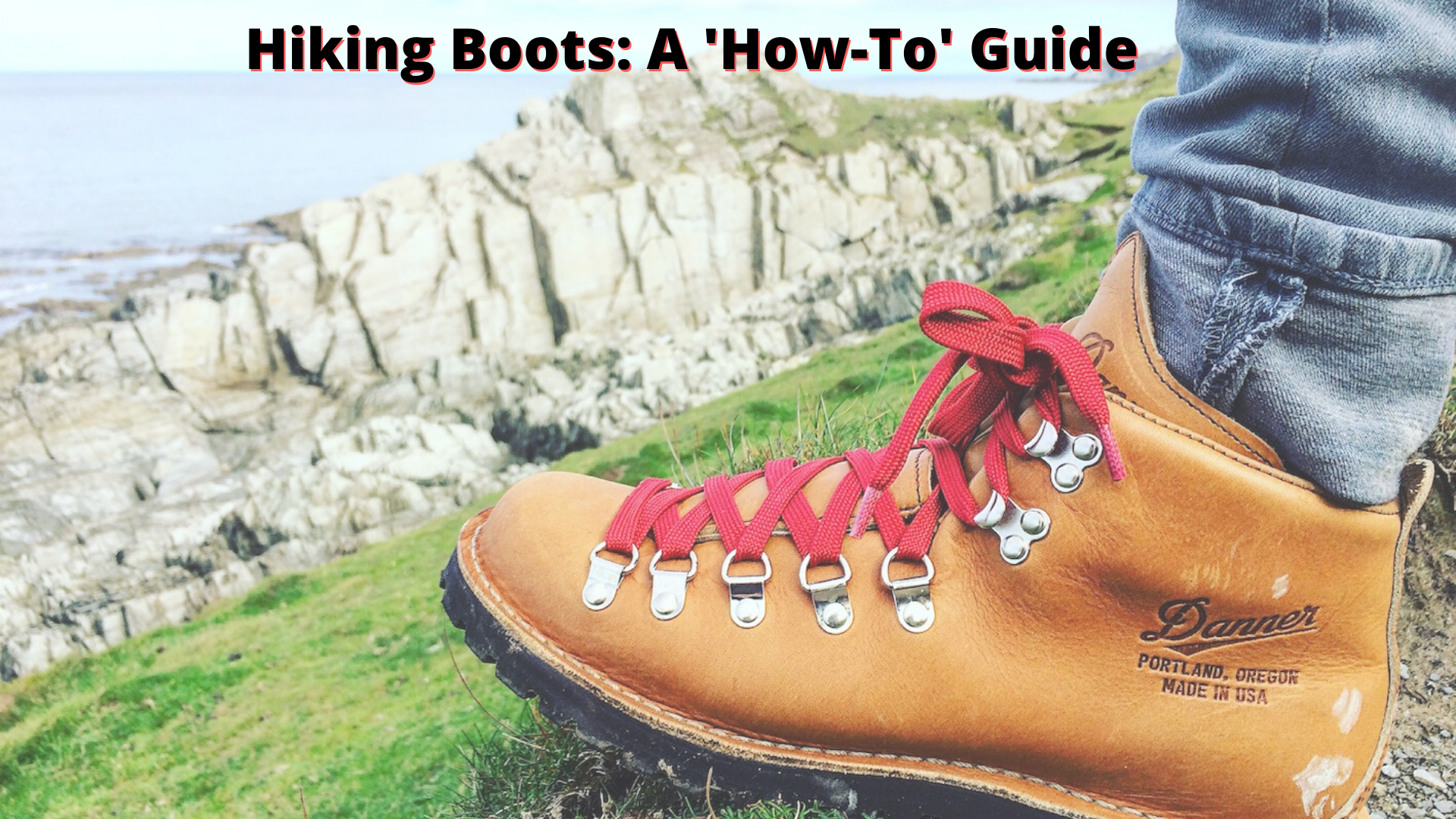Cart
You have no items in your shopping cart

Hiking Shoes: A ‘How-To’ Guide
Whether you’re planning for a weekend trekking trip to McRitchie Reservoir or a full-scale hike through the Grand Canyon, hiking shoes will make or break your experience, no questions asked. Having a pair that fits not just your feet but also the trail is definitely the most important hiking gear choice: There’s nothing worse than numb toes, blackened nails, sprained ankles or blisters. And the list goes on.

But just how DO you pick the right shoes? After all, there’s a myriad of different models and brands out there, each boasting higher specs than another. Whatever your considerations may be, though, just remember that the most important thing is how does the shoes fit on your feet? With that said, let’s take a look at the things you should take note of when scouring for a new pair of hiking boots.
Types
The first step to picking out the shoes for you is to consider the trail that you’re going to attempt. Is it a relatively short trail with easy obstacles? Or is it a survival trek through the uncharted wilderness? There are different styles of hiking shoes for different terrains, and you’d be much better of understanding the specific requirements for each type and getting the right shoe that gets the job doe. Regardless though, you can forget about spiffy designs and colorful patterns: Your shoes won’t look much different from others when they’re covered in mud and grime from a solid day of hiking.
Low-Cut

These shoes are ankle-length, and are typically soft and light. These qualities make them ideal for easy trails that can be completed within a day. Materials-wise, they come in full-grain leather for hiking in cold weather, as well as synthesised fabrics and mesh for warmer temperatures.
Mid-Cut

These come up higher than the low-cut variant, providing solid support for the ankles and helps to prevent sprains, especially when you’re carrying a heavier load. They also tend to be slightly stiffer than low-cut shoes, but are nevertheless flexible and comfortable once broken in. They can be made of the same materials as their low-cut counterparts.
High-Cut

Shoes of this category have the heaviest construction and stiffest sole. These are made for serious hiking expeditions or when you plan to hike through mud and vegetation. If you are carrying very heavy loads and walking on rough, off-track paths, then these are the boots for you. Their sturdiness will ensure that they survive whatever terrain you throw at it, all while providing you with the extra support needed for these uneven surfaces.
Fitting
Now that you’ve decided on the type of hiking shoes to invest in, it’s time to get down to business and find one that fits YOU. And while there seems to be more considerations when choosing a hiking shoe as compared to a regular one, it really isn’t hard at all as long as you follow these 5 steps.
Step1: Socks come first.
It is advisable to wear a pair of socks you plan to use on the hike when fitting on new shoes as socks of different materials and thickness are going to make the shoes fit differently.
Pro Tip: Make sure that your pair of socks have a degree of cushioning already, and try to get wool ones as these do a fantastic job of wicking moisture from your skin, preventing blisters and reducing unpleasant odor.
Step 2: Size matters.
Do not get a pair of hiking boots of the same size as your regular sneakers, because warning: It’s gonna hurt. Not only will your shoes have to accomodate a thicker pair of socks, your feet are also going to swell after a long day of walking. Therefore, feel free to go up half or even a full size.
Step 3. Be choosy.
Don’t just try one pair of boots and think it’s ‘the one’. Different brands will have different ‘lasts’ - the wooden frame inside a shoe that gives it its shape and fit. So definitely experiment with models from at least a couple different brands to know which ones truly fit your feet to a T.
Step 4: Loose and tight, where it matters.
While the shoes should definitely fit snugly around certain areas such as the ball and heel of the feet, it shouldn’t feel cramped around your toes and the sides of the feet.
Pro Tip: A good way to gauge how well the shoes fit is to try and slot your index finger into the space at the heel while the shoes are unlaced. If it fits in comfortably, that’s a great indication that this pair could be a keeper!
Step 5: Take them for a spin!
Last but not least, now that the shoes fit well on your feet while stationary, it’s time to walk around in them to get a feel for how they really perform on the trail. Take a few laps around the shop and make sure they are creasing at the base of the toes. Your heels also shouldn’t be slipping out of the boots. If they still feel comfortable afterwards, then congratulations! You have successfully picked a pair of hiking shoes that are guaranteed to take you far on your journeys.
Comments
Be the first to comment...